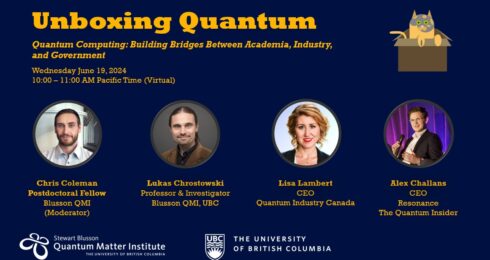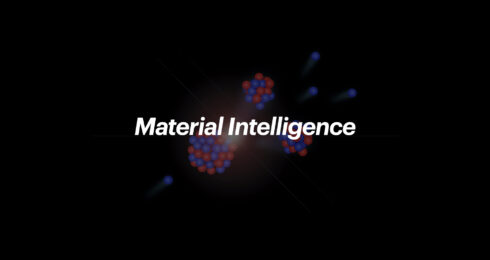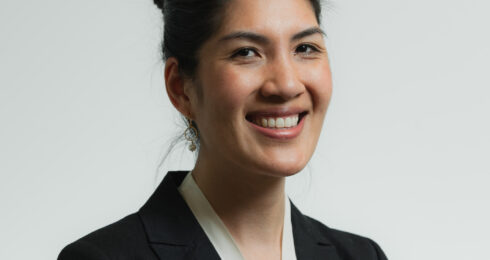Big problems require focus, and this summer, IBM offered 62 scholars from around the world the opportunity to learn, connect, and collaborate with their peers on the topic of quantum error correction. Paul Herringer and Julian Ding, theoretical physicists who study under the supervision of Robert Raussendorf at the Stewart Blusson Quantum Matter Institute, were fortunate to be able to attend the exclusive IBM Quantum Error Correction (QEC) Summer School in Tarrytown, New York in July.
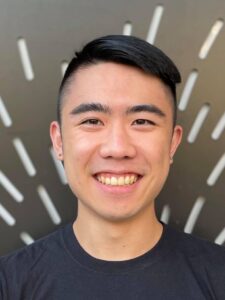
Pictured: Julian Ding.
“It was eye-opening to be able to talk with so many people who are also working in the field,” said Ding, who recently graduated from UBC. “I was under the impression that the field was very niche and esoteric. And maybe it is, but it was incredible to be in an environment where every single person knows what you’re talking about.”
The IBM QEC Summer School was a pilot project that aimed to nurture connections and networks with expertise in quantum error connection, from physics to engineering. For the participants, this meant that time was focused and rich with opportunities to exchange knowledge and establish relationships around shared research interests. A highlight of the program was the lectures from academic and industry leaders: “It was just really incredible to hear from these experts, people who have already achieved so much in this area,” said Herringer, a PhD student who studies a model of quantum computing known as measurement-based quantum computing.
“The most common model of quantum computing is called the circuit model, in which you have some qubits and you do operations with them and that’s your computation,” said Herringer. However, in the measurement-based model devised by Raussendorf and his colleague, Hans Briegel, researchers like Herringer start with an entangled quantum state involving many qubits. These entangled states are called resource states, because they provide the “fuel” for quantum computation.
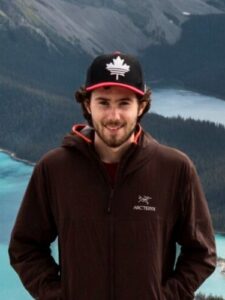
Pictured: Paul Herringer.
“If you start with a resource state, then all you have to do is make a particular sequence of measurements on this state and it turns out that by doing this, you can simulate any kind of quantum circuit that you would like,” said Herringer, who was eager to learn at the IBM QEC Summer School how to incorporate new research in quantum error correction into his current research. “Error correction is one of the biggest problems facing the field of quantum computing right now, and there are connections between measurement-based quantum computing and error correction that I was eager to learn more about.”
Ding spent last year working on a numerical simulation of a quantum error-correcting code as part of his Honours project while he completed his undergraduate degree in physics computer science, and so while he was more acquainted with the topic, he was eager to engage with the speakers and other participants to learn more about quantum computing, the field that led him to develop a connection with Raussendorf.
“The lectures and the access to expertise was amazing, but also to be able to have conversations outside of our day-to-day work helped me to check my understanding and both build on what I knew but also encounter some new ideas I had never considered before,” said Ding. “It was a very valuable opportunity for me at this stage of my research.”
Organizers encouraged participants to build relationships and learn from one another during their time there.
“We were all together in this hotel, kind of in the middle of nowhere,” said Ding. “It was half an hour to walk to town, so you were gently nudged to get to know each other, to spend time together, and to talk. The result was that we developed this sense of community and camaraderie that will serve the field as it grows over the next decade or so.”
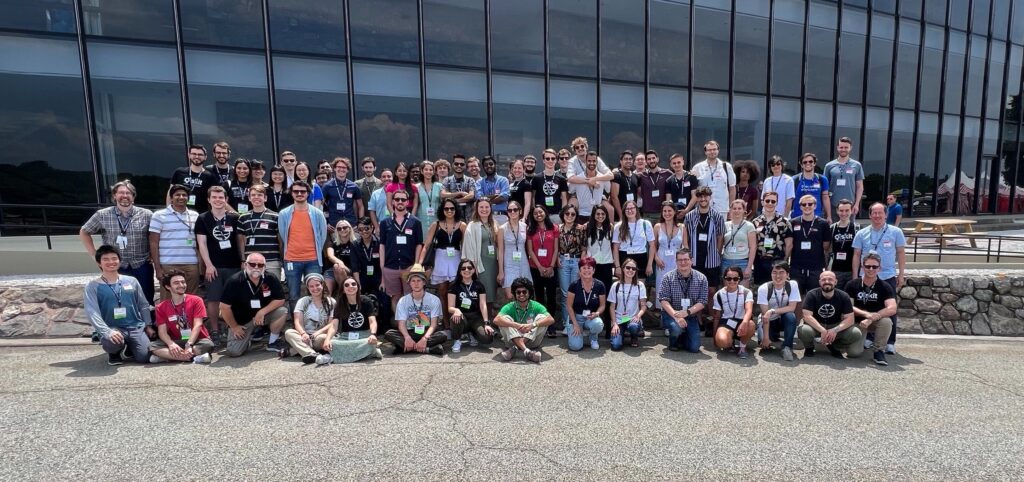
Pictured: the class of the 2022 IBM Quantum Error Correction Summer School. Image source: Julian Ding.
